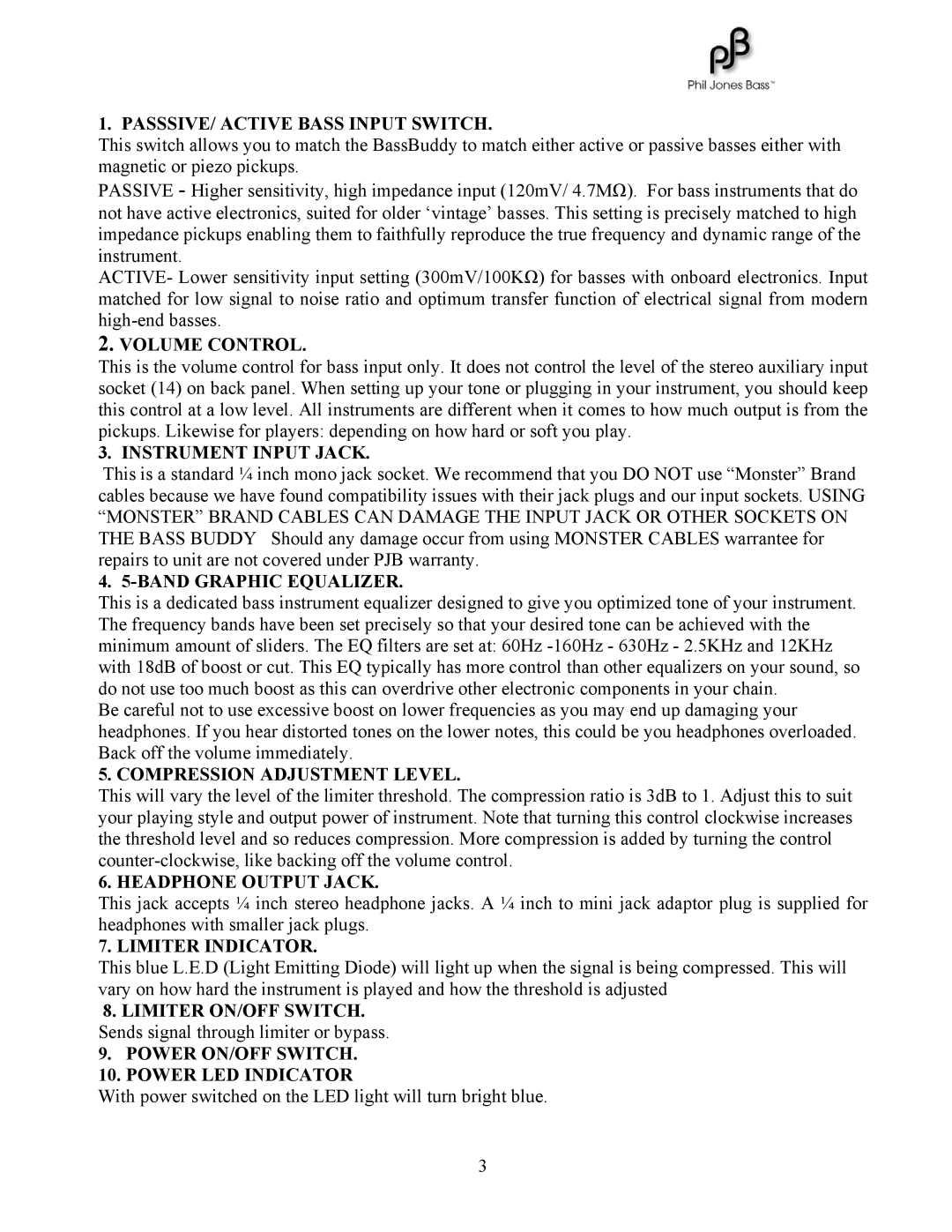
1. PASSSIVE/ ACTIVE BASS INPUT SWITCH.
This switch allows you to match the BassBuddy to match either active or passive basses either with magnetic or piezo pickups.
PASSIVE - Higher sensitivity, high impedance input (120mV/ 4.7MΩ). For bass instruments that do not have active electronics, suited for older ‘vintage’ basses. This setting is precisely matched to high impedance pickups enabling them to faithfully reproduce the true frequency and dynamic range of the instrument.
ACTIVE- Lower sensitivity input setting (300mV/100KΩ) for basses with onboard electronics. Input matched for low signal to noise ratio and optimum transfer function of electrical signal from modern
2.VOLUME CONTROL.
This is the volume control for bass input only. It does not control the level of the stereo auxiliary input socket (14) on back panel. When setting up your tone or plugging in your instrument, you should keep this control at a low level. All instruments are different when it comes to how much output is from the pickups. Likewise for players: depending on how hard or soft you play.
3. INSTRUMENT INPUT JACK.
This is a standard ¼ inch mono jack socket. We recommend that you DO NOT use “Monster” Brand cables because we have found compatibility issues with their jack plugs and our input sockets. USING “MONSTER” BRAND CABLES CAN DAMAGE THE INPUT JACK OR OTHER SOCKETS ON THE BASS BUDDY Should any damage occur from using MONSTER CABLES warrantee for repairs to unit are not covered under PJB warranty.
4. 5-BAND GRAPHIC EQUALIZER.
This is a dedicated bass instrument equalizer designed to give you optimized tone of your instrument. The frequency bands have been set precisely so that your desired tone can be achieved with the minimum amount of sliders. The EQ filters are set at: 60Hz
Be careful not to use excessive boost on lower frequencies as you may end up damaging your headphones. If you hear distorted tones on the lower notes, this could be you headphones overloaded. Back off the volume immediately.
5. COMPRESSION ADJUSTMENT LEVEL.
This will vary the level of the limiter threshold. The compression ratio is 3dB to 1. Adjust this to suit your playing style and output power of instrument. Note that turning this control clockwise increases the threshold level and so reduces compression. More compression is added by turning the control
6. HEADPHONE OUTPUT JACK.
This jack accepts ¼ inch stereo headphone jacks. A ¼ inch to mini jack adaptor plug is supplied for headphones with smaller jack plugs.
7. LIMITER INDICATOR.
This blue L.E.D (Light Emitting Diode) will light up when the signal is being compressed. This will vary on how hard the instrument is played and how the threshold is adjusted
8.LIMITER ON/OFF SWITCH.
Sends signal through limiter or bypass.
9.POWER ON/OFF SWITCH.
10.POWER LED INDICATOR
With power switched on the LED light will turn bright blue.
3
